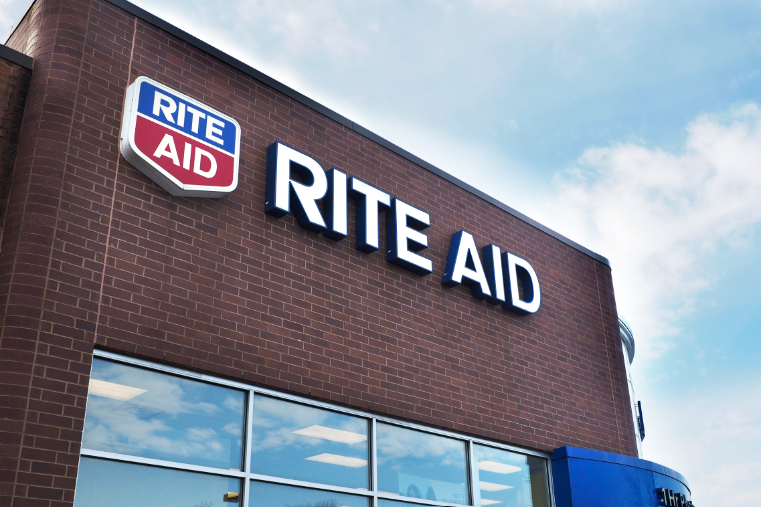Rite Aid, a prominent pharmacy chain in the United States, initiated a bankruptcy filing on Sunday, grappling with an immense debt load, dwindling sales, and an onslaught of over a thousand federal, state, and local lawsuits alleging the unlawful dispensing of painkiller prescriptions.
The company has sought refuge under Chapter 11 bankruptcy protection in New Jersey. Among its principal creditors are pharmaceutical giant McKesson Corporation and health insurer Humana Health.
In an effort to steer the restructuring process, Rite Aid has installed Jeffrey Stein as its new chief executive. Mr. Stein, the founder of Stein Advisors, a financial consultancy specializing in revitalizing distressed companies, will take the reins. Elizabeth Burr had been serving as Rite Aid’s interim CEO since January.
Rite Aid is just one of numerous drugstore chains grappling with legal challenges linked to the devastating opioid crisis in the United States. In March, the Department of Justice lodged a complaint against Rite Aid and its various subsidiaries, alleging that the company dispensed excessive quantities of opioids, often in the presence of multiple warning signs indicating potential misuse.
Rite Aid, employing over 45,000 individuals, has grappled with mounting challenges in recent years, pitted against larger rivals such as CVS, Walgreens Boots Alliance, and the formidable presence of Amazon. As sales continued to dwindle, the company found itself with diminishing resources for business investment and increasingly strained debt repayment. According to company records as of June, its debt load stood at $3.3 billion, exclusive of the impending opioid litigation.
Since the beginning of the year, Rite Aid’s stock has endured a precipitous drop, losing nearly 80 percent of its value.
In response to these hurdles, Rite Aid has shuttered several outlets in recent months and is in the process of readying for the closure of hundreds more. The downsizing of the company further compounds its competitive challenges.
The new leader, Mr. Stein, is dedicated to guiding the company through the bankruptcy proceedings to reduce its debt burden. His ultimate goal is to transform the chain into a modern neighborhood pharmacy, unlocking its full potential.
The bankruptcy filing represents a significant decline for Rite Aid, which was once the largest drugstore chain in the United States. Back in 1998, Rite Aid commanded a market value of nearly $13 billion. However, as of Friday, its market value had dwindled to less than $40 million, underscoring years of mismanagement and financial challenges.
David Silverman, a retail analyst at Fitch Ratings, commented on the company’s prolonged struggle, noting their ongoing inability to reverse their fortunes.
Rite Aid announced on Sunday that it is in the process of exploring a potential agreement to sell Elixir, a pharmacy benefit manager it acquired for $2 billion in 2015, to MedImpact. Such a deal would be contingent upon approval from a bankruptcy judge.
Pharmacy benefit management companies, commonly known as P.B.M.s, serve as intermediaries for employers and health insurance plans, facilitating tasks such as drug pricing negotiations.
Elixir has posed difficulties for Rite Aid, primarily due to its smaller scale, which has hindered the company’s ability to secure more lucrative contracts. The three largest pharmacy benefit managers in the United States—CVS Caremark, Cigna’s Express Scripts, and UnitedHealth Group’s OptumRx—process approximately 80 percent of all prescription claims in the country, placing Rite Aid at a disadvantage.
In an effort to cope with dwindling sales, Rite Aid has undertaken a strategic downsizing of its store network, currently operating approximately 2,000 locations across 17 states. In contrast, CVS Pharmacy boasts a vast network of over 9,500 stores, while Walgreens maintains around 8,700.
Rite Aid’s substantial reduction in store count followed an unsuccessful merger attempt with Walgreens in 2017. The Federal Trade Commission expressed antitrust concerns regarding the consolidation of two of the nation’s largest drugstore chains. Consequently, when the merger fell through, Rite Aid opted to divest over 2,000 stores—equivalent to approximately 48 percent of its outlets—along with three distribution centers, in a transaction valued at $5.18 billion with Walgreens. At that time, Rite Aid emphasized that it would retain its most successful locations, and then-CEO John Standley viewed the sale of these assets as a pivotal strategic transformation for the company.
Subsequently, Rite Aid attempted to merge with the grocery chain Albertsons. However, the deal fell through in 2018 due to the loss of support from Rite Aid’s shareholders. Initially, during the pandemic, Rite Aid experienced a surge in sales as people stocked up on hand sanitizers, cleaning products, and beauty items. The company accelerated its technological offerings, introduced smaller-format stores tailored to pharmacy needs, and emphasized efforts to attract more millennial and Generation X customers. As a result, Rite Aid witnessed an increase in earnings and a reduction in losses.
However, as the pandemic prolonged, customers began consolidating their visits to drugstores, which impacted Rite Aid’s ability to capture impulse purchases. Social distancing measures also led to a milder cold and flu season during the pandemic’s first winter, resulting in a significant decline in Rite Aid’s cough, cold, and flu business. In June, Rite Aid reported revenue of $5.7 billion for its most recent quarter, down from $6 billion the previous year, with ongoing challenges in selling items such as food, beauty products, and household goods. Consumers are increasingly turning to platforms like Amazon, local corner stores, and other alternatives for purchasing these goods.
Rite Aid, originally known as Thrif D Discount Center and founded in 1962, rapidly expanded and became a publicly traded company in 1968 under the leadership of its founder and CEO, Alex Grass. Over the next decade, the company extended its presence to several states, reaching locations in Michigan, Ohio, the Gulf Coast, and the West Coast. At its peak, Rite Aid held the position of the nation’s largest drugstore chain and was a prominent player in New York City.
However, in the late 1990s and early 2000s, Rite Aid faced a securities and accounting fraud case, resulting in the indictment of former executives, including Martin Grass, the founder’s son and a former CEO. The fraud led to a $1.6 billion restatement of earnings, which was the largest restatement at the time. Rite Aid was forced to revise its financial reports in 2000. In recent times, Rite Aid’s leadership has seen changes, with Elizabeth Burr assuming the role of CEO after the abrupt departure of Ms. Donigan in January, following a four-year tenure.
This bankruptcy filing adds Rite Aid to a list of pharmaceutical companies facing financial challenges amid litigation related to the opioid crisis, such as Mallinckrodt Pharmaceuticals, which filed for bankruptcy a second time in three years.
(Source: CNBC | New York Times)









